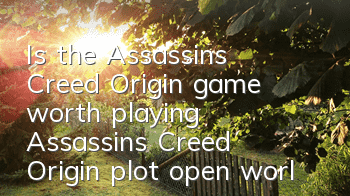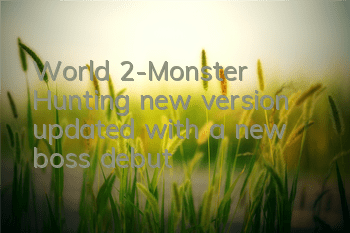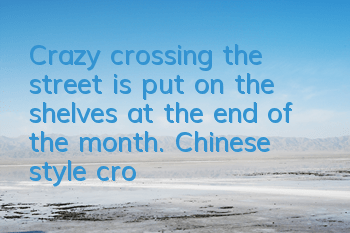Since its birth in 2007, Ubisoft's Assassin's Creed series has been bringing players a solid open-world action-adventure experience. For players who have played the first generation, the Egio Trilogy, the third generation and the rebellion, although they feel extremely satisfied during the process, they will probably be a little tired of this gradually formulaic open world after playing it for a long time.
Ubisoft is obviously not satisfied with the achievements of the "The Revolution" and a series of comments after its launch, so he intends to start again in the work "Origin". Not only does the story background of "Origin" bring back the story of the earliest Egyptian story of the founding of the Invisible (Assassin), but it also further moves closer to the popular ARPG in the world today in the core system. This time we will review the pioneering work of this mythological trilogy - "Assassin's Creed: Origin".
Ubisoft Open World as always
To be nice, Ubisoft's open world is that it is stable and has diverse elements on the map for players to explore, but to be honest, this is a formulaic open world that is overfilled, deliberately allowing you to explore the map, and has a strong sense of homework. "Origin" also follows Ubisoft's past formula. After the prologue, the journey will start from Siwa, and then learn about the map gameplay composition: bird spots, blacksmiths/costumes/stables, local military strongholds, side missions, various collection elements, ten patrol officers, arenas and racecourses, and robbery resource delivery teams.
These various and appropriately arranged elements are scattered on the game map according to the province and region, allowing players to have enough things to do and collect, and are accompanied by certain rewards and rewards. For example, the more birds are explored, the more the scope of the eagle's exploration will be increased. Side missions or conquer strongholds can obtain experience value, money and even good equipment, while the robbery resource delivery team can give you the resources you need to upgrade several major abilities. Although the side line is not as good as the well-received "The Witcher 3", it won't feel very canned until you pass the level. Some of the branches are considered to be moderate and continuous, such as first stage of conversation and then investigation, and finally set out to another place to save people or find things. Some tasks are even saved, which can be regarded as a small surprise.
Overall, the scope of these elements does not exceed the core of the Assassin series: stealth/battle and collection. I don’t know if it has been affected by trends in works such as "The Witcher 3". Many branches have gone from taking on missions and listening to NPC narratives to Conan-style investigation scenes, and then taking action to the target stronghold or rescue/assassinate the target on the spot. The overall immersion and logic are not too abrupt. If you have to say it, the layout can only start after taking over the task, so most of the one-stage completion branches are somewhat lacking in strength.
This kind of open world that combines the main line through huge maps and elements has always been fixed by UbisoftDesign, and the overall combination of "Origin" does make people motivate to complete these elements. Because of the introduction of RPG design, it is almost very difficult to go straight to the main line. Players need to collect resources and equipment to proceed with the main line. This work also breaks up the main line part, abandoning the traditional linearity, and is a bit like a staged taste. For example, in the first stage, you need to kill several orderers to enter the next stage, and the order of these orderers is not certain, and players can freely choose the order. These provide a good motivation to better match the main branch line and map elements.
ARPG that catches up with the trend
The game world has been moving towards the trend of integrating open world and ARPG since 2010, so you can see works like the Soul Series and "The Witcher 3" swept over one after another. Ubisoft obviously realized this, so he introduced the level, equipment and attribute systems that only RPGs can have in Origins. In the world of Origin, level is a major strength indicator, which is directly related to whether the player can cope with current enemies and tasks. If the level difference exceeds level 3, it will become difficult or even impossible to proceed.
This point depends on the player's mentality. If you like the previous pure action adventure experience, you will feel uncomfortable, as if you are restricted by level and upgrade. For example, whether the previous one could be killed with one blow is now determined by the player level and whether the upgrade of the sneak sword is enough. Introducing this type of RPG design is the trend of learning and trend so far. Looking at the Soul Series mastering the right to speak and becoming a part of learning, and the new God of War is also gorgeously reincarnated ARPG, you can see that this is an unforeseen trend. Compared to ACT, you need to practice a lot and eat reactions and talents. Players prefer to have diverse matching features in equipment and character genres.
The advantage of level system, equipment and attribute import is that compared with the limited upgrades and enhancements of traditional pure ACT, actual combat depends entirely on player reactions and technology. This type of RPG design not only retains the thrill of real-time ACT battles, but also provides options other than hard practice and talent - upgrade and enhancement through various tasks and elements to play, accumulate equipment and adjust attributes. Maybe in DMC, you can't do all kinds of handsome combos like high-playing games or take away the boss with infinite empty sets. If you are limited in technology, you can't experience all the pleasure of this pure ACT. However, in "Origin", players can solve tasks or collect, strengthen their levels and abilities, and then fight against strongholds and enemies that they can't beat to ensure a certain degree of fun.
I don't know if it's a coincidence or the industry's general understanding of ACT VS ARPG is like this. After ARPG is transformed, many works will be a little dissatisfied with the action weight and system. "Origin" is also such a work. At first glance, there are six or seven weapons in melee combat, but the button configuration adopts the mainstream L1/L2 lightThe design of heavy attacks is separated, and each weapon is strictly speaking, light attacks are 1-3 and heavy attacks are 1. Even if the player wants to double-click to match, he will find that doing so is not very meaningful. Because the design of this type of mainstream ARPG is to adapt pure ACTs with traditional fighting designs. If the RPG elements are imported and the richness of players' large number of combos is provided, wouldn't it be a slap in the face? Players will also be puzzled whether I want to compete in combos or follow the gameplay enhanced by RPG.
A Origin is the first time that the Assassin series has tried ARPG transformation, so the weight of action and ending has been greatly reduced, but with the design of bow and arrow and explosive air, it is still barely acceptable to have a basic bottom line. Most of the battles that face the front are dodges, occasional blocking, charging heavy attacks and breaking shields, or long-pressing light attacks, and then watching each weapon module with roughly two sets of final performances. If it is compared with the gorgeous performances like Assassin 3, you will feel that the sacrifice of ARPG is a bit big. At this point, the sequel "Odyssey" seems to make up for the ARPG action and combat experience through a large number of skill switching, but it still feels a little restrictive.
The mediocre plot, subtle twist
Although the plot performance of "Origin" is generally considered to be better than "Odyssey", in fact, Aya and the actions and statements behind the orderly guards in the late game, even the couple's breakup can only be said to be just a matter of course. The main problem is that the layout is not enough. Since this type of open world + ARPG requires players to spend a lot of time on map exploration, the weight and length of the main line will be linear and relatively shrinking. Therefore, not only is the important son killed at the beginning a little abrupt, but his wife Aya has to wait for the player to arrive at Alexander to see her for the first time, but the next main line is intermittently inserted. Alexander met with Cleopatra once again, and then Aya’s sea mission. Then, we have to see Aya again until the main line of "Gabinian Style", and then the main task of "Goddess Sword of Aya", which is a series of unfolding and taking a sharp turn and pushing the progress of the main line.
But apart from several intimate performances and the death of the son as a common motive, the couple didn't feel that their relationship was deep. In addition, the game only has the flashback at the beginning of his son's main performance, which really makes people feel too empathy and substitution for the joy of Baye's family and the persistent revenge. This performance at the beginning of the mission was not given Aiya at all, so Alexander was really a bit of a black question mark when he first met. I just feel that Aiya is loyal to Queen Cleopatra and has her own ambitions, and she has no real sense of "we are husband and wife".
By the same, not having enough to lay out the son and solving the problem too quickly makes the plot turn sharply, so as to bring it into the main line of revenge, which also leads to a very ordinary sense of substitution. The preceptor and Caesar's group were also very poorly discussed, and the two or three of them were almost there.The "Goddess Sword" mission was only entrusted to the players. There was no straightforward explanation or performance behind them. All the players could master was the anger of Ba Ye after assassinating the orderly masters below again and again. The last two big names orderly masters were basically the players who realized their existence in the later stage of the main line. And we were abandoned by the Queen of Cleopatra. It felt like we came too fast and couldn't see any context. There was only the dialogue and cutscene on the main line on the table. So this is why the theme of "Origin" was clearly clear and explained why Ba Ye parted ways with Ai Ya, but the sense of substitution was really average. The only person who is more thrilling is that he is actually involved in the assassination of Caesar in history.
The first work of the trilogy that continues the past and opens up
Assassin's Creed has experienced the glory of the Egio Trilogy and the American Story series of three generations, it can be seen that new stimulation and transformation are needed. Especially after the various performances and reputations of "The Great Revolution", although "Origin" obviously refers to some mainstream market trends, its overall level and gaming experience are very good. The scenery on the picture is beautiful, the map scale and open elements are also typical Ubisoft model. The core RPG elements are also steady and sufficient for players to spend a lot of time in the game just to explore this Egyptian land and strengthen their roles.
The only drawback is that after all, "Origin" is the first work after the transformation, and the action module and skill gameplay can only be said to be basic. Whether it is the light and heavy attack design that moves towards mainstream ARPG, the action tends to be realistic and simple hacking, and the ending performance and move skills richness are very average. But this also provides a lot of room for the subsequent "Odyssey", so that in "Odyssey", players can experience diverse skills and refreshing battles. Therefore, "Origin" plays the role of the pioneer in the Assassin's ancient myth ARPG trilogy.









